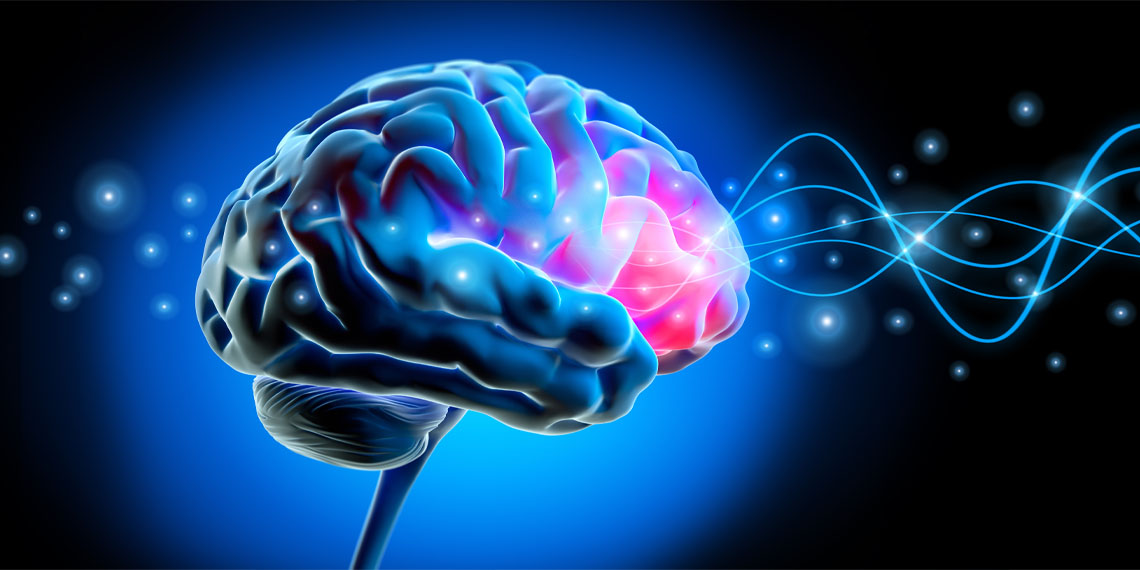Repetitive transcranial magnetic stimulation, a non-invasive brain stimulation technique, might be an effective and well-tolerated treatment for major depressive disorder with a seasonal pattern, according to new research. This finding holds significant promise for expanding treatment options for those suffering from seasonal depression, especially in regions with limited sunlight during winter months. The study was published in Psychiatry Research.
Major depressive disorder, a common mental health condition, affects millions worldwide. Notably, a significant subset of individuals with depression experience a seasonal pattern, often worsening during the shorter, darker days of winter. This study was propelled by the need to understand whether rTMS, an established treatment for MDD, is equally effective for those experiencing seasonal variations in their depressive symptoms.
Repetitive transcranial magnetic stimulation, or rTMS, is a form of brain stimulation therapy used to treat depression and other disorders. It involves placing a magnetic coil near the scalp, where it delivers magnetic pulses to stimulate specific areas of the brain. This non-invasive method has been increasingly recognized for its potential to alleviate symptoms of depression, especially in cases where traditional treatments like medication have not been effective.
“Like most studies in science, this one originated from an observation that we decided to study systematically,” explained study author Peter Giacobbe, an associate scientist at the Sunnybrook Health Sciences Centre in Toronto. “Living in Canada, the days appear very short and the number of hours of sunlight are much reduced during the months from November to March.”
“Like other countries in Northern climates, we have higher rates of seasonal affective disorder in Canada during these months than countries that are closer to the equator. Countries in the extreme Southern latitudes would have a reverse seasonal pattern with shorter days (and more negative effects on mood) during the months of May to August.”
“Many of our patients would report worsening in their mood in the late autumn and winter months, characterized by notable seasonal changes in their sleep duration, level of social activity, mood or emotional wellbeing, weight, appetite and energy level,” Giacobbe said. “Many of our patients felt that rTMS treatments were helpful to minimize or prevent their seasonal dips in mood, although rTMS had not been identified as an effective treatment for seasonal affective disorder.”
“Additionally, we noted that there was an increase in requests for extra ‘booster’ rTMS treatments in our patients during these months that were previously successfully treated with rTMS earlier in the year. As a result, we want to study if indeed rTMS — which is an approved treatment for major depressive disorder but not yet studied in seasonal affective disorder — would be an effective choice for those with seasonal depression.”
“We were happy to note that this was indeed the case expanding the number of viable treatment options for this group of people and suggesting that it is important for clinicians to listen to the ‘signals’ provided by our patients and systematically follow-up and study them,” Giacobbe said.
The researchers conducted a retrospective analysis of 127 patients who received their first rTMS treatment at the Harquail Centre. These patients, aged 16 years and older, were diagnosed with Major Depressive Disorder. To assess the severity of their depression and the presence of a seasonal pattern, two key tools were used: the Hamilton Depression Rating Scale (HAMD-17) and the Personal Inventory for Depression and Seasonal Affective Disorder (PIDS).
About 46% of the participants were identified as having a seasonal pattern in their depression. This high prevalence underscored the importance of exploring effective treatments for this subgroup.
The patients underwent high-frequency rTMS targeting the left dorsolateral prefrontal cortex, a region of the brain associated with mood regulation, for a period of 4 to 6 weeks. “rTMS is a treatment typically delivered 5 days a week for 4 to 6 weeks, for a total of 20-30 sessions. Each treatment session is between 3 and 20 minutes depending on the protocol selected,” Giacobbe explained.
The effectiveness of the treatment was evaluated through improvements in their HAMD-17 scores, as well as self-reported changes in depression symptoms using the Quick Inventory of Depressive Symptomatology (QIDS).
The researchers found that rTMS led to a significant improvement in depression symptoms, regardless of whether the patients exhibited a seasonal pattern. In particular, about 32% of the patients achieved remission, and 55% responded positively to the treatment, showing a 50% or greater decrease in their HAMD-17 scores.
Interestingly, the study also found that higher scores on the Personal Inventory for Depression and Seasonal Affective Disorder were associated with greater improvement in depression symptoms when rTMS treatment began between September and February. Furthermore, the research indicated that typical and atypical neurovegetative symptoms, such as changes in sleep patterns and appetite, improved similarly over the course of treatment, irrespective of seasonality.
“In terms of evidence-based options to treat seasonal depressions, both light therapy and SSRI medications have been shown to be effective, but many people who seek treatment in our clinic with the brain stimulation techniques such as rTMS have either not responded to these treatments or are looking for alternatives to help them,” Giacobbe told PsyPost. “This study is the first of its kind suggesting that a brain stimulation technique such as rTMS can be an effective and well-tolerated treatment option for those with seasonal depression.”
“The results of this study potentially expand the number of treatment options available for this group, especially in those who cannot tolerate and/or have not responded to either light therapy or SSRI medication. Given the time-limited nature of rTMS treatment, it lends itself to a targeted and time-limited therapeutic approach to effectively treat seasonal depression during people’s greatest time of need in the autumn and winter months. It also provides a rationale for offering booster TMS in those who have previously responded to TMS in order to minimize or prevent the risk of relapse during their seasonal period of risk.”
Despite these promising findings, the study has limitations. Notably, it was a retrospective analysis, which means it looked back at existing data rather than setting up a new experimental design. This approach, while valuable, does not offer the control and randomization of a prospective study. Also, the study lacked a sham control group, which is often used to measure the placebo effect.
“Given that this was not a randomized controlled trial, we still did not know what the ‘active ingredient(s)’ is in the improvements we noted,” Giacobbe explained. “It is not clear to what extent the non-specific aspects of coming to the treatment were playing a role in the positive results, i.e. the behavioral activation of leaving their house and coming to the hospital every day for 4 to 6 weeks and/or the brief social contact with the nurse rTMS operator during the treatment sessions. We also do not know whether the combination of light therapy plus rTMS is superior to either treatment alone. This is something we hope to study in the future.”
The study acts as an important stepping stone for further research. Prospective, controlled trials could offer more definitive conclusions about the effectiveness of rTMS in preventing the onset of seasonal depression and its long-term benefits.
The study, “Seasonal pattern and depression outcomes from repetitive transcranial magnetic stimulation“, was authored by Enoch Ng, Sean M. Nestor, Jennifer S. Rabin, Clement Hamani, Nir Lipsman, and Peter Giacobbe.

Rachel Carter is a health and wellness expert dedicated to helping readers lead healthier lives. With a background in nutrition, she offers evidence-based advice on fitness, nutrition, and mental well-being.




:max_bytes(150000):strip_icc()/Supplements-You-Shouldnt-Take-for-Menopause-93e35025df3e456c9cb1588042de2f0b.jpg)



